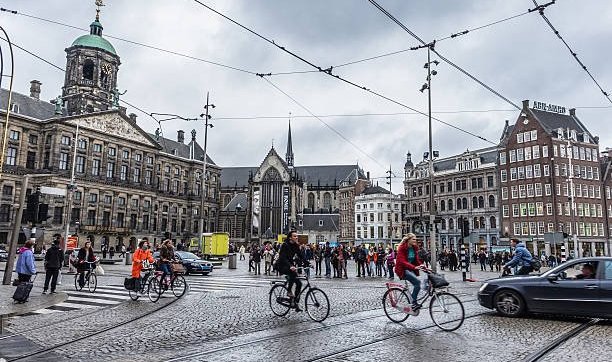Can bicycle paths be more sustainable?
Can bicycle paths be more sustainable?
There is no means of transport as sustainable as the bicycle. To promote cycling there should be more bicycle paths, thousands of kilometers worldwide. But is it also possible to make bicycle paths themselves more sustainable? There are some interesting experiments.
Bicycle paths are usually made of asphalt. Beautiful material which has proven to be very suitable for this purpose. But the materials used to make asphalt aren’t always very sustainable. Bitumen, for instance, the binder in asphalt, is distilled from petroleum. And lots of CO2 is released when laying asphalt, because the asphalt needs to have a high temperature.
Asphalt with olive oil
Since November 2021, the municipality of Amsterdam is participating in an experiment with more sustainable asphalt in the Amsterdamse Bos (the Amsterdam Woods). Part of a hikers and bikers path has been made with an underlayer of asphalt mixed with vegetable bio-based oil (olive oil). This layer is more sustainable because it can be laid down cold instead of hot. This saves natural gas and CO2 emissions. Next to the test section, builder Dura Vermeer has also laid down traditional asphalt, so both types of asphalt can be compared. By May 2022 the experiment will be completed.
Toilet paper instead of bitumen
You can also experiment with the composition of asphalt. It is possible to use cellulose from used toilet paper instead of bitumen for making asphalt. There is more than enough used toilet paper. During sewage treatment the toilet paper is filtered out of the sewage. After that the paper is cleaned, and the cellulose – the fibres needed to make the binder – is extracted. This method is increasingly used, though not yet in the Amsterdam region.
Riding on solar panels
Also sustainable: double use of space. How about a bicycle path which generates electricity at the same time? Last year, the longest solar bicycle pathwas laid down in In the Dutch village Maartensdijk: 330 meters of bicycle path made of solar panels integrated into the concrete blocks that make up the bicycle path, generating sustainable energy. It can provide 40 households with electricity, or it can be used for street lighting, for instance.
Other experiments?
Maybe you know of more experiments or ideas that can contribute to more sustainable bicycle paths. Please place your reaction in the comments below.








